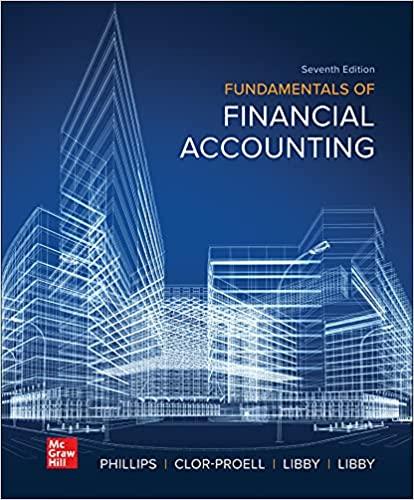Question
10.16 In light of the Conceptual Framework for Financial Reporting what are the broad arguments for and against the use of fair value and modified
10.16 In light of the Conceptual Framework for Financial Reporting what are the broad arguments for and against the use of fair value and modified historical cost in accounting?
10.18 As noted in the chapter, potential valuation bases were considered when deciding how to measure fair value. Describe each and, where appropriate, give examples of how these are already used in accounting.
Case Study
THE COST OF REHABILITATION
New Forrest Mining is attempting to value a rehabilitation liability it has because of a mine development in northern Western Australia. The entity is legally required to rehabilitate the site to its former condition once mining is complete (estimated to be in 10years time).
The entity has decided to use the expected present valuation technique and has established the following information. The mine is about 50% complete. Based on estimates to rehabilitate the mine in its current state it is estimated the labour costs (using inhouse expertise) would be approximately $250 000, although a sensitivity analysis of the estimates indicates there is a 25% chance that it would cost $50 000 less and a 25% chance it could cost $50 000 more. The real value of these wages is not expected to change significantly over the coming years. In addition to wages, there would also be overhead and equipment costs that would add about 80% to the total rehabilitation costs. If an external party were asked to undertake the project, these costs would be comparable. In addition, an external contractor would include a mark up of around 20% to cover its requirements to make a reasonable profit. Further, given that there is a time factor due to the 10year time frame, it is estimated that the external contractor would probably require a 5% premium after inflation to compensate it for risks associated with the inherent uncertainty of what could happen over the next 10 years. Inflation is expected to continue to be around 4% for the foreseeable future. The riskfree interest rate on 10year government bonds is 5%. The entity estimates its risk of nonperformance is approximately 3.5%.
QUESTIONS
1 Identify the three valuation techniques that could be used for establishing fair value and discuss their appropriateness in this situation.
2 There are two present value approaches outlined in AASB 13/IFRS13. How are they different and how would it have changed your approach to establishing fair value in this case study?
3 Calculate the expected present value of the liability in accordance with AASB 13/IFRS 13.
4 How would your value have differed if you had simply calculated the valuation based on the entities expected discounted cash flow?
5 How is this difference in valuation, which has caused concern in the mining industry, justified by the IASB?
6 What is nonperformance risk and why is it included in the calculation?
Step by Step Solution
There are 3 Steps involved in it
Step: 1

Get Instant Access to Expert-Tailored Solutions
See step-by-step solutions with expert insights and AI powered tools for academic success
Step: 2

Step: 3

Ace Your Homework with AI
Get the answers you need in no time with our AI-driven, step-by-step assistance
Get Started


